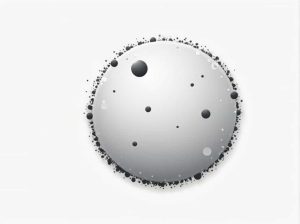Planetary nebulae are one of the most stunning celestial objects in the universe. Despite their name, they have nothing to do with planets. Instead, they are clouds of glowing gas ejected by dying stars. So why are they called “planetary” nebulae? The answer lies in historical observations and early misunderstandings. This topic explores the origin of the term, the formation of planetary nebulae, and their significance in astronomy.
What Are Planetary Nebulae?
Planetary nebulae are formed when a medium-sized star, like our Sun, reaches the end of its life. As the star exhausts its fuel, it sheds its outer layers into space, creating a glowing shell of ionized gas. The remaining core becomes a white dwarf, which emits intense ultraviolet radiation, causing the surrounding gas to glow.
Key Characteristics of Planetary Nebulae
- Consist of expanding shells of ionized gas.
- Formed by stars similar in size to the Sun.
- Appear colorful due to the emission of different elements.
- Have a relatively short lifespan in astronomical terms (around 10,000-50,000 years).
Why Are They Called “Planetary” Nebulae?
The name “planetary nebula” dates back to the late 18th century when astronomers first observed these objects through early telescopes.
Historical Observations by William Herschel
In 1785, William Herschel, the astronomer who discovered Uranus, observed these nebulae and noticed that they resembled the newly discovered planets. Through the telescopes of that time, planetary nebulae appeared as small, round, and disk-like objects—similar in shape to planets like Uranus and Neptune.
A Misleading Name
- Early telescopes lacked the resolution to reveal the detailed structure of nebulae.
- The round shape led astronomers to associate them with planets.
- The term “planetary nebula” became widely used, even after astronomers understood their true nature.
How Do Planetary Nebulae Form?
Planetary nebulae are the final evolutionary stage of medium-sized stars. The process occurs in several steps:
1. The Red Giant Phase
As a star exhausts its hydrogen fuel, it expands into a red giant. The outer layers become unstable and start to drift away.
2. The Ejection of Outer Layers
The dying star sheds its outer layers, creating a shell of gas moving outward into space.
3. Ionization by the Central White Dwarf
The leftover core, now a white dwarf, emits strong ultraviolet radiation. This radiation excites the surrounding gas, making it glow in various colors.
4. Dissipation into Space
Over time, the nebula expands and fades away, leaving behind a white dwarf that gradually cools down.
The Colors of Planetary Nebulae
The beautiful colors of planetary nebulae come from different gases being ionized by the central white dwarf.
- Red – Emitted by hydrogen (Hα emission).
- Green – Emitted by doubly ionized oxygen ([O III] emission).
- Blue/Violet – Emitted by helium and other ionized gases.
These glowing colors make planetary nebulae some of the most visually striking objects in the universe.
Examples of Famous Planetary Nebulae
Several planetary nebulae stand out due to their unique appearance and importance in astronomical research.
The Ring Nebula (M57)
- Located in the constellation Lyra.
- One of the best-known planetary nebulae.
- Appears as a bright ring of gas with a faint central star.
The Helix Nebula (NGC 7293)
- Located in the constellation Aquarius.
- Sometimes called the “Eye of God” due to its appearance.
- One of the closest planetary nebulae to Earth.
The Cat’s Eye Nebula (NGC 6543)
- Has a complex, layered structure.
- Shows multiple rings of ejected gas.
- One of the first planetary nebulae studied in detail.
The Role of Planetary Nebulae in the Universe
Planetary nebulae play a crucial role in the cosmic cycle of matter.
1. Recycling Elements into Space
As the dying star ejects its outer layers, it returns elements like carbon, nitrogen, and oxygen to the interstellar medium. These elements contribute to the formation of new stars and planets.
2. Helping Scientists Study Stellar Evolution
Planetary nebulae provide valuable insights into the life cycle of stars. By studying their composition and structure, astronomers can understand how stars evolve and die.
3. Contributing to Galactic Enrichment
The materials expelled by planetary nebulae help enrich galaxies with heavier elements, influencing the formation of future generations of stars.
Do All Stars Form Planetary Nebulae?
Not all stars go through the planetary nebula phase. Only stars with a mass between 0.8 and 8 times the Sun’s mass will form planetary nebulae.
- Smaller stars (like red dwarfs) fade away as white dwarfs without forming a nebula.
- More massive stars explode as supernovae instead of forming planetary nebulae.
The Future of the Sun as a Planetary Nebula
Astronomers predict that in about 5 billion years, the Sun will expand into a red giant before shedding its outer layers. It will then leave behind a white dwarf, surrounded by a glowing shell of gas—a planetary nebula. This will mark the Sun’s final stage before it cools down over billions of years.
The term “planetary nebula” is a historical misnomer that originated from early telescope observations. Despite having no connection to planets, the name has persisted. These nebulae are fascinating objects that provide valuable information about the life and death of stars. By studying them, astronomers gain a deeper understanding of stellar evolution and the cosmic recycling of elements.



